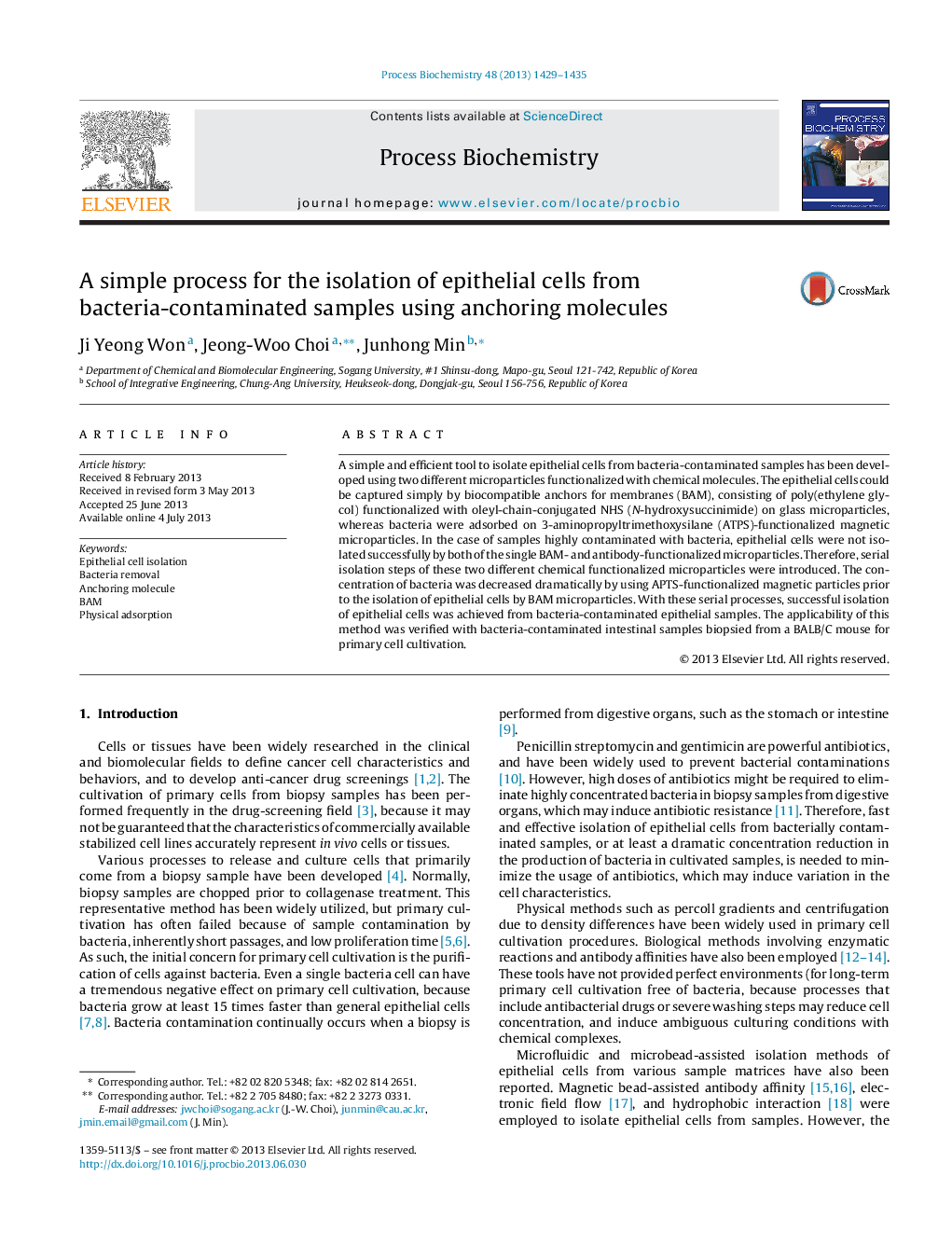| Article ID | Journal | Published Year | Pages | File Type |
|---|---|---|---|---|
| 34640 | Process Biochemistry | 2013 | 7 Pages |
•Epithelial cells were isolated from bacteria contaminated sample.•No biological materials were utilized to isolate epithelial cells.•20 min were required to achieve bacteria free epithelial cells.
A simple and efficient tool to isolate epithelial cells from bacteria-contaminated samples has been developed using two different microparticles functionalized with chemical molecules. The epithelial cells could be captured simply by biocompatible anchors for membranes (BAM), consisting of poly(ethylene glycol) functionalized with oleyl-chain-conjugated NHS (N-hydroxysuccinimide) on glass microparticles, whereas bacteria were adsorbed on 3-aminopropyltrimethoxysilane (ATPS)-functionalized magnetic microparticles. In the case of samples highly contaminated with bacteria, epithelial cells were not isolated successfully by both of the single BAM- and antibody-functionalized microparticles. Therefore, serial isolation steps of these two different chemical functionalized microparticles were introduced. The concentration of bacteria was decreased dramatically by using APTS-functionalized magnetic particles prior to the isolation of epithelial cells by BAM microparticles. With these serial processes, successful isolation of epithelial cells was achieved from bacteria-contaminated epithelial samples. The applicability of this method was verified with bacteria-contaminated intestinal samples biopsied from a BALB/C mouse for primary cell cultivation.
